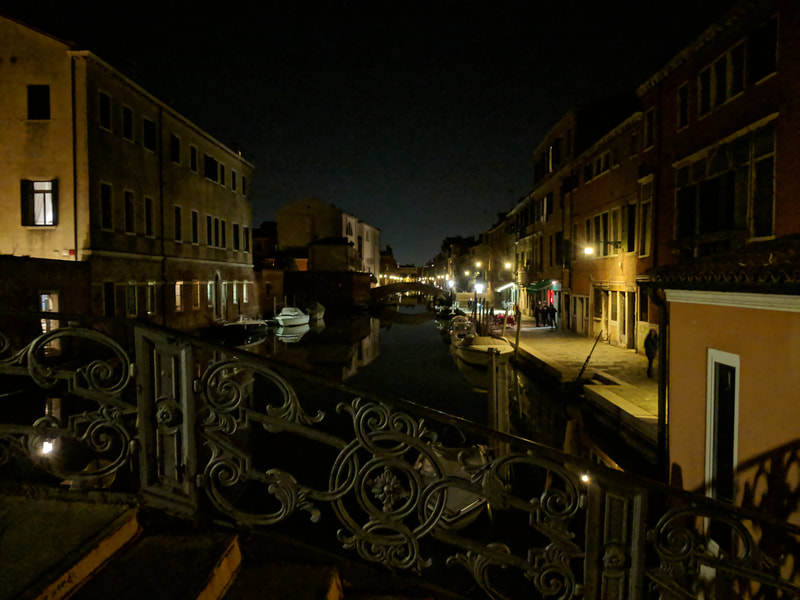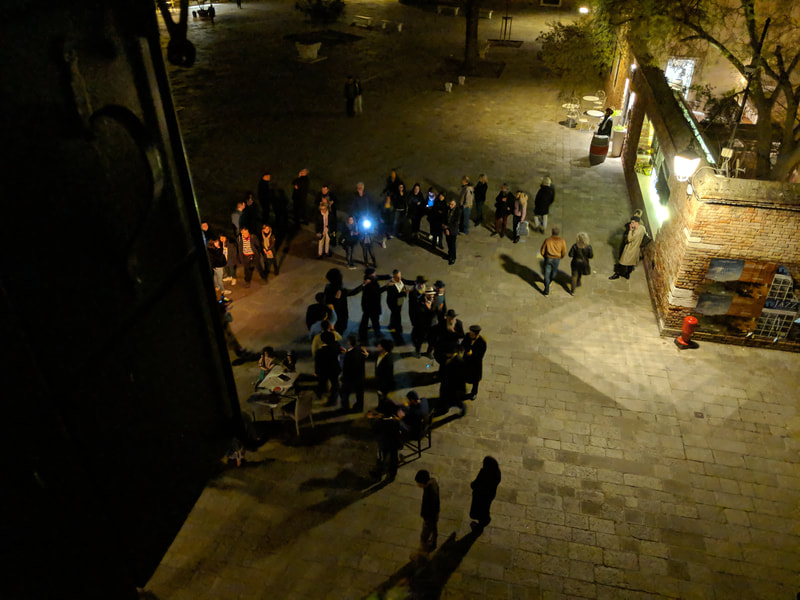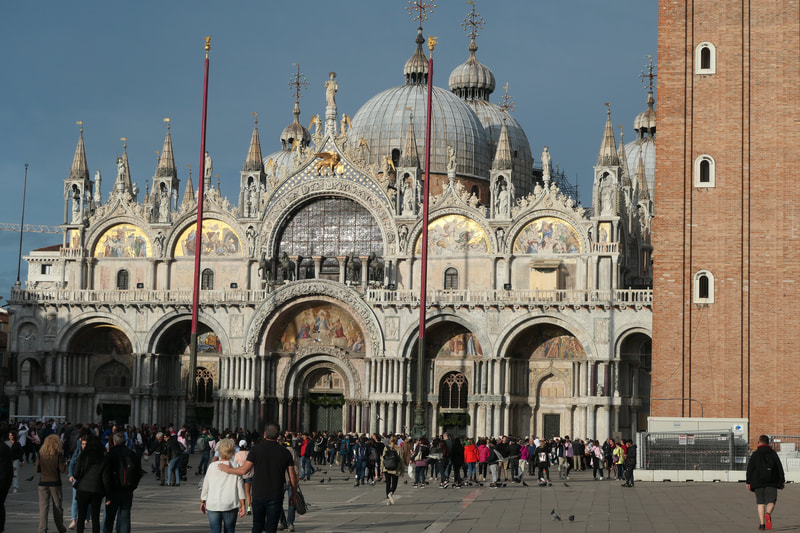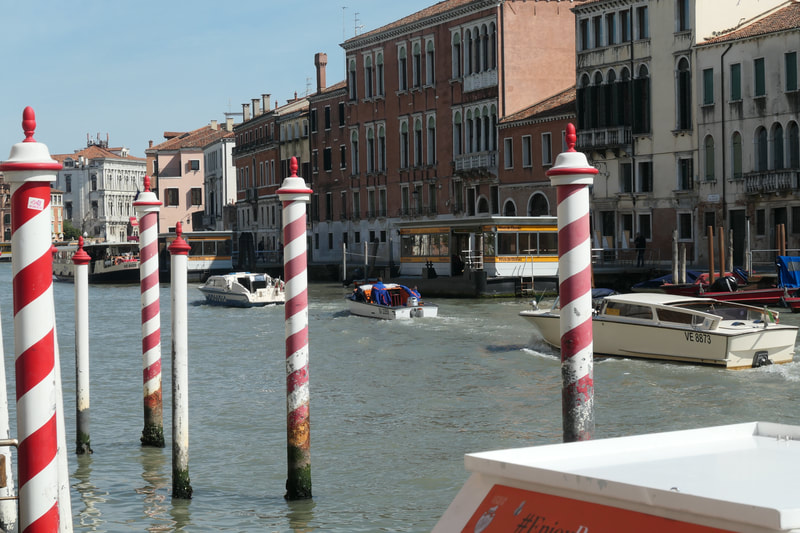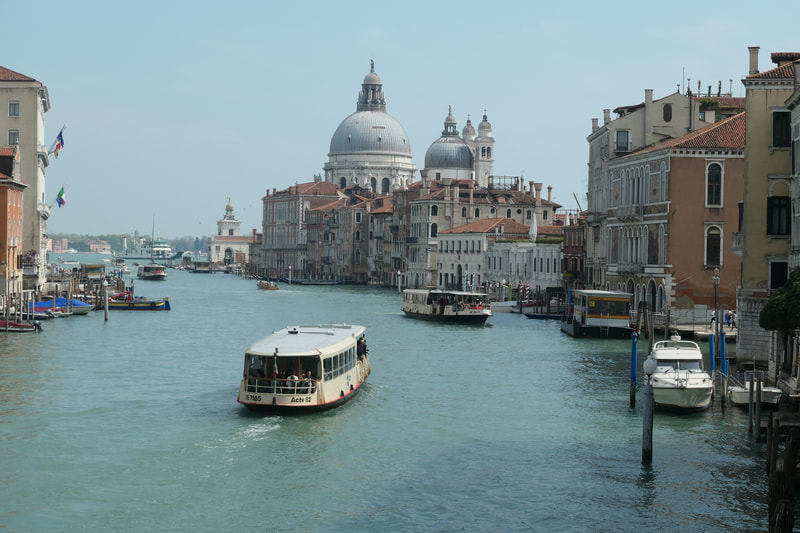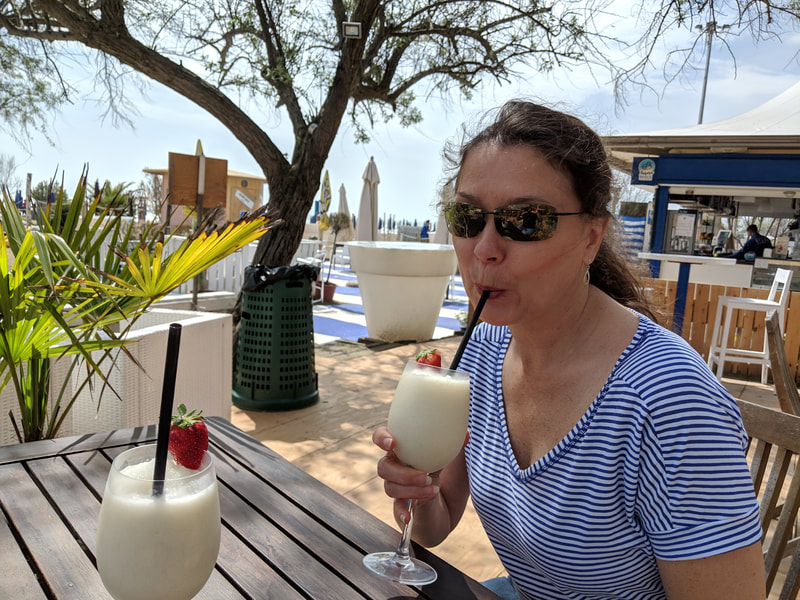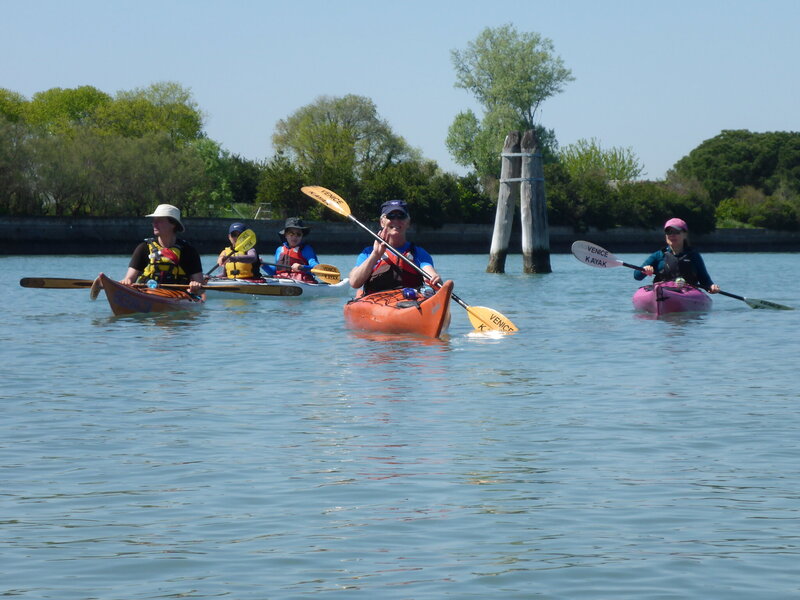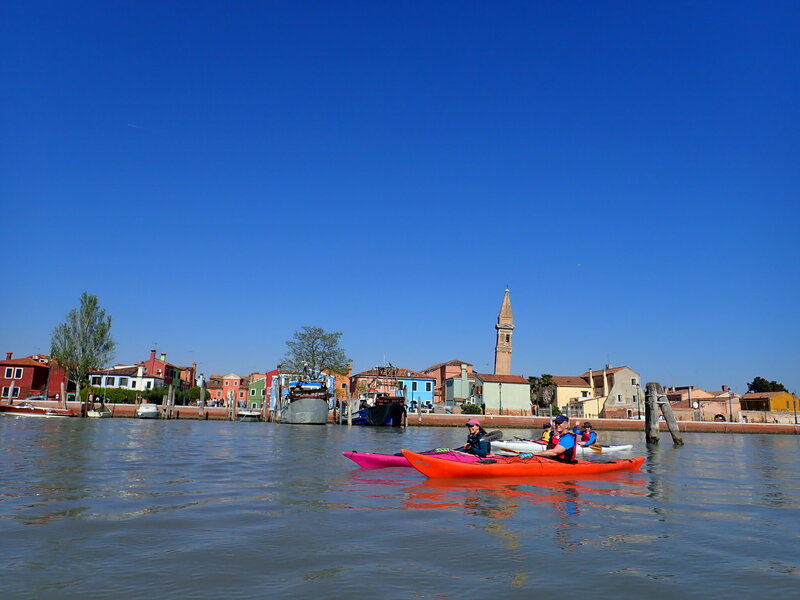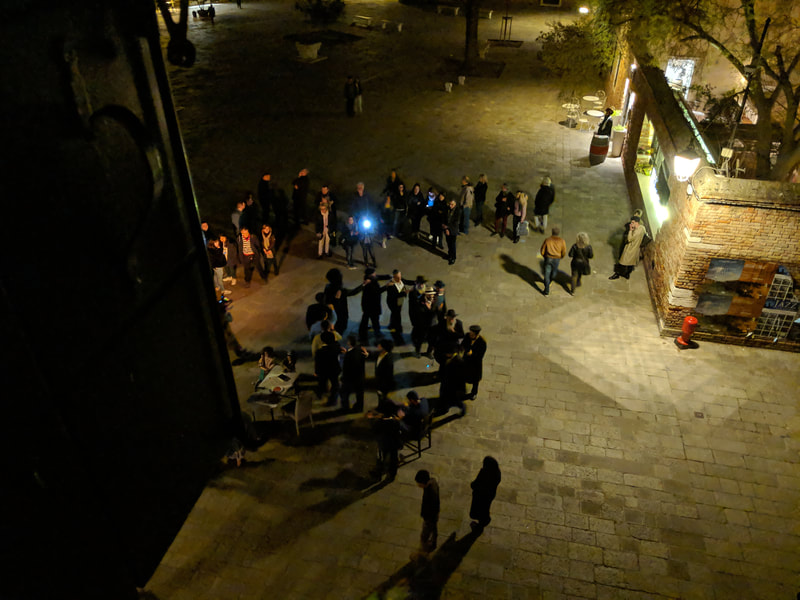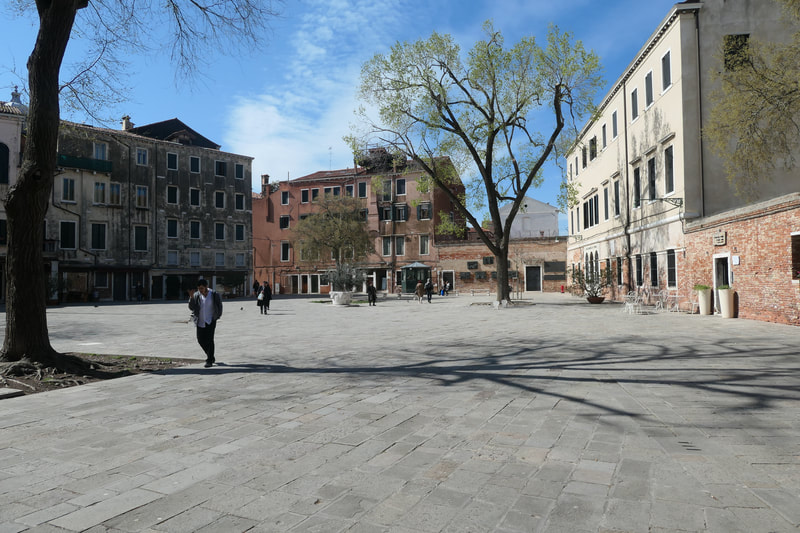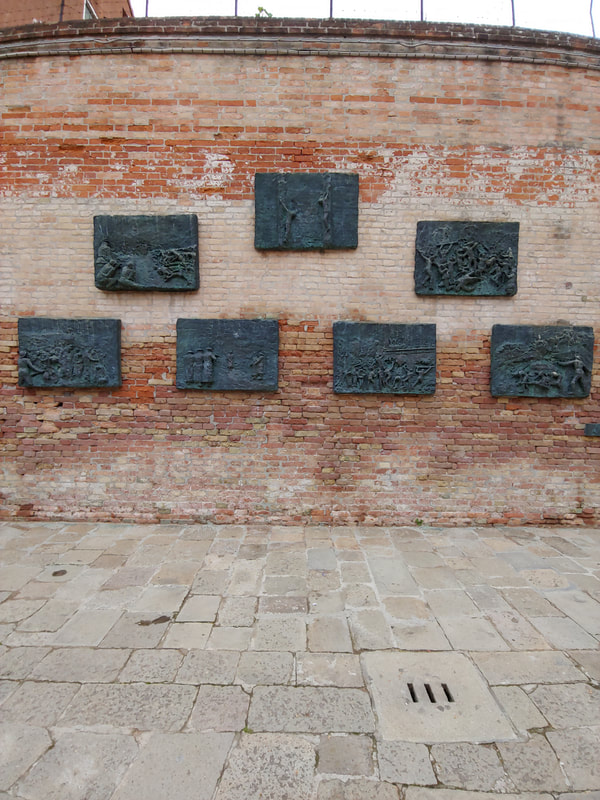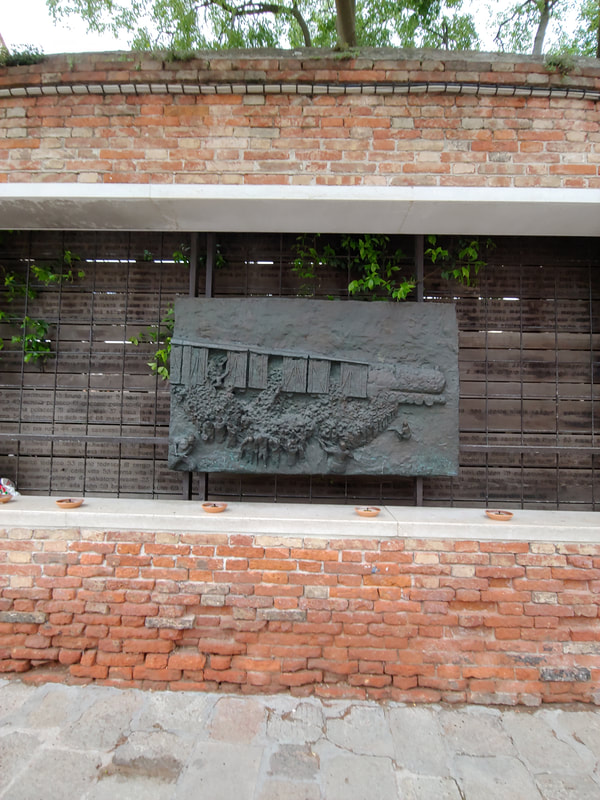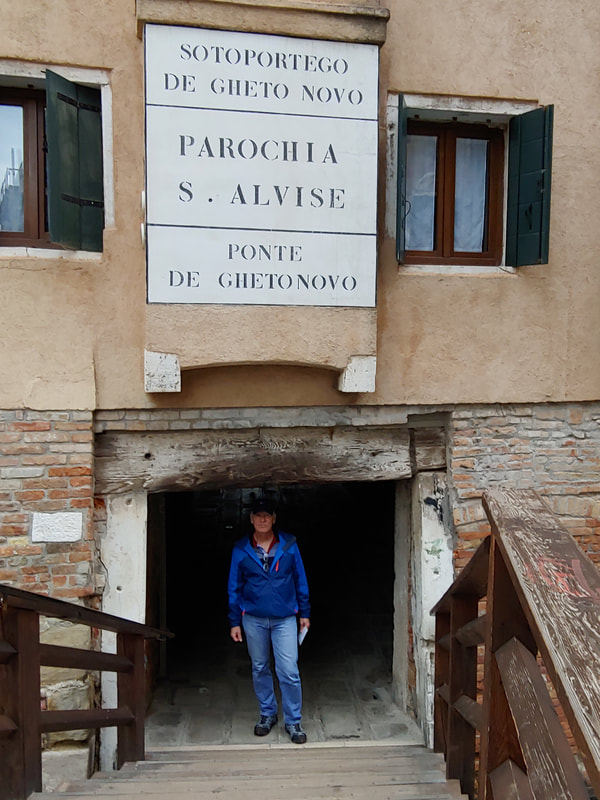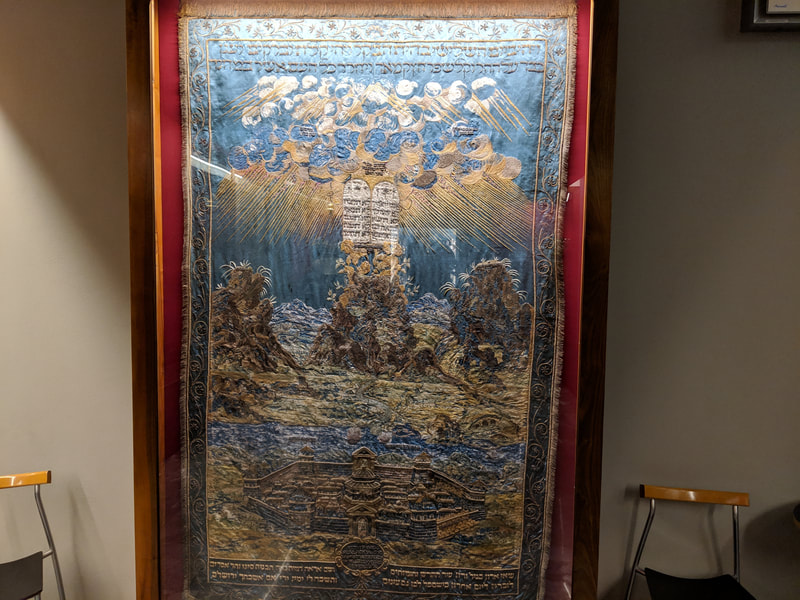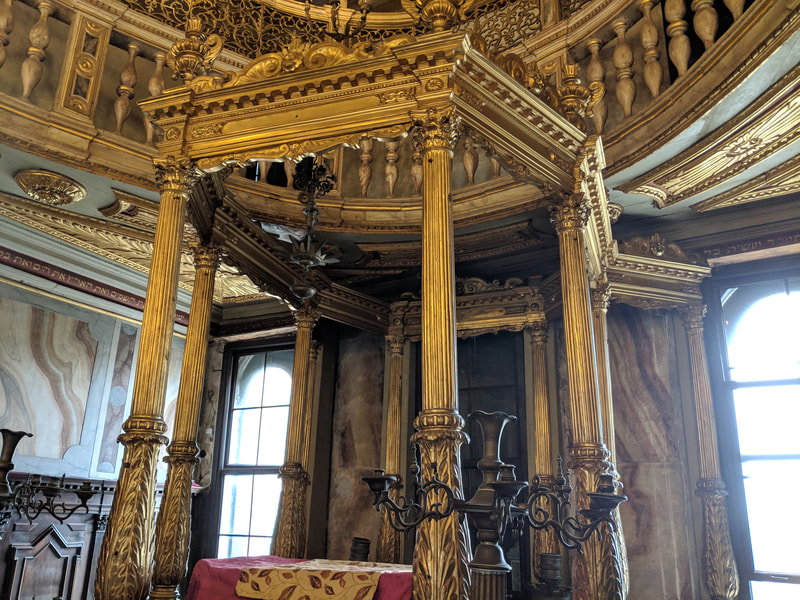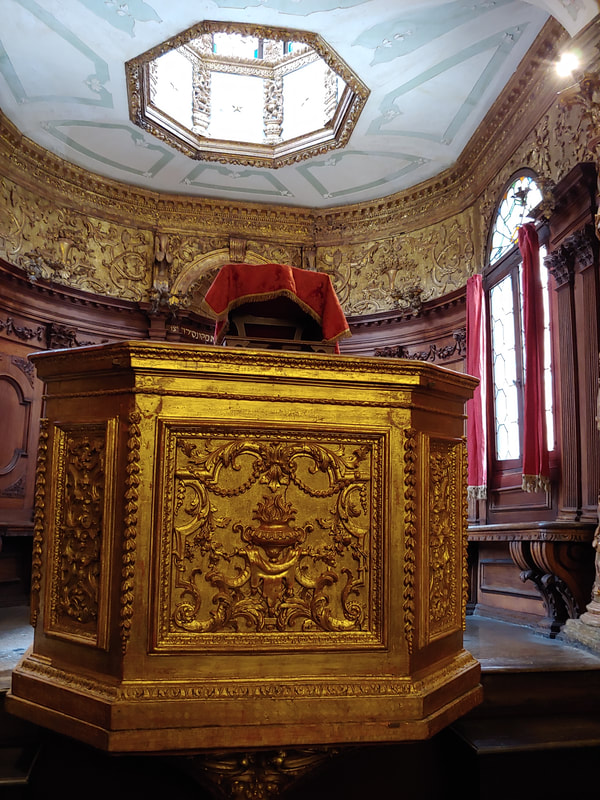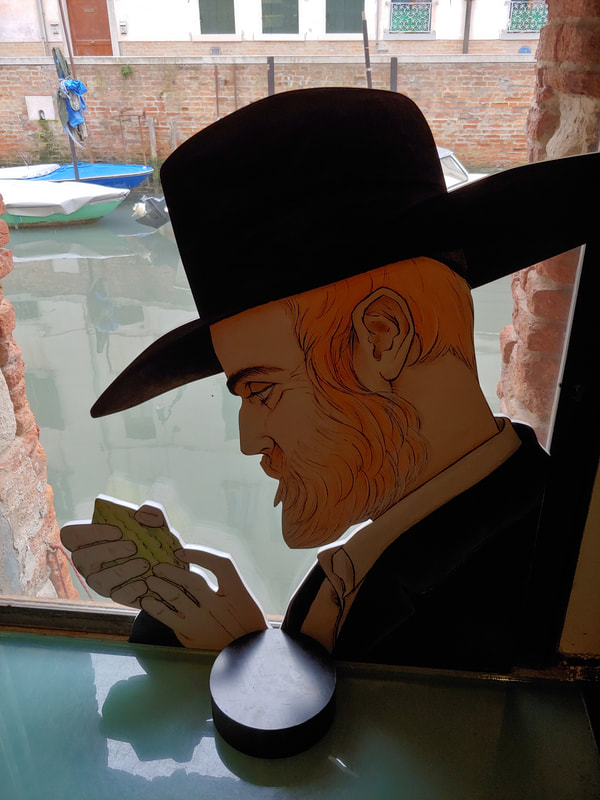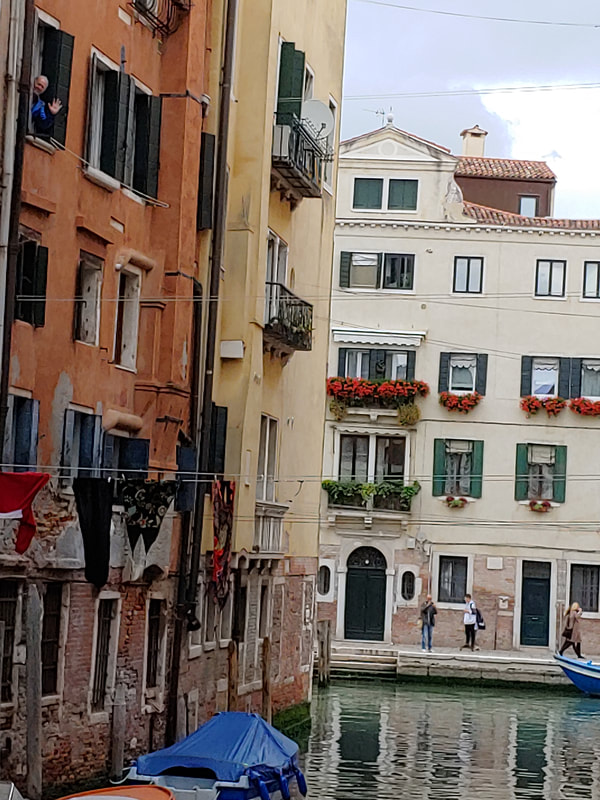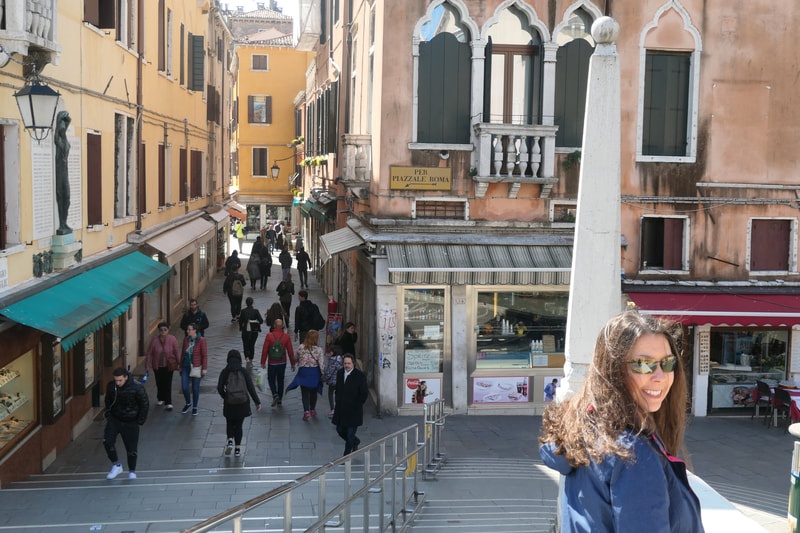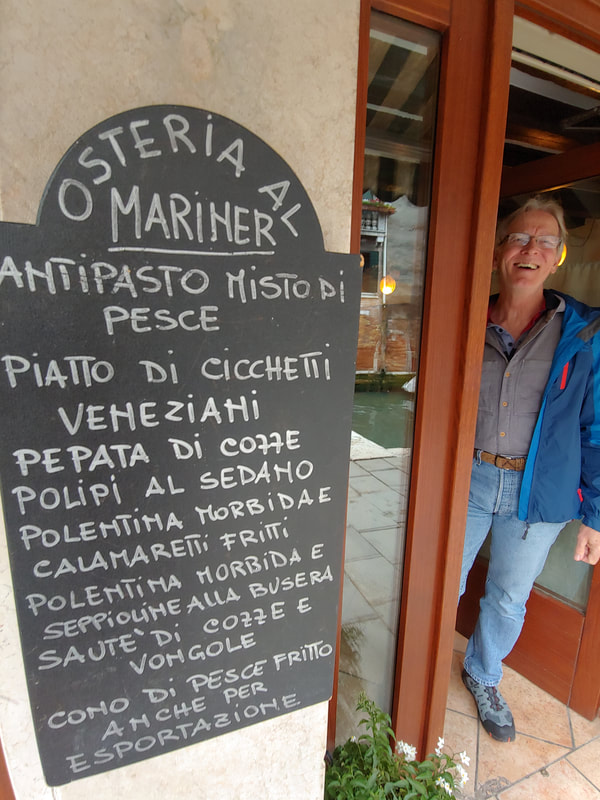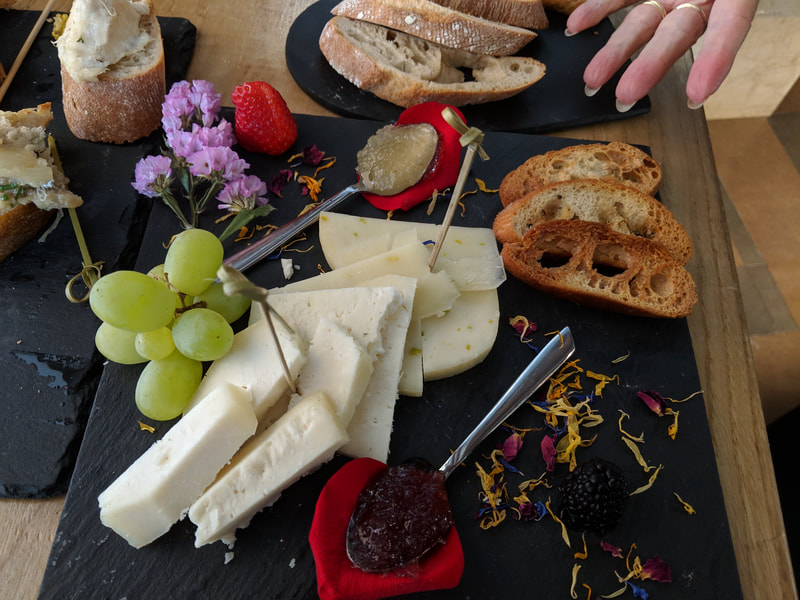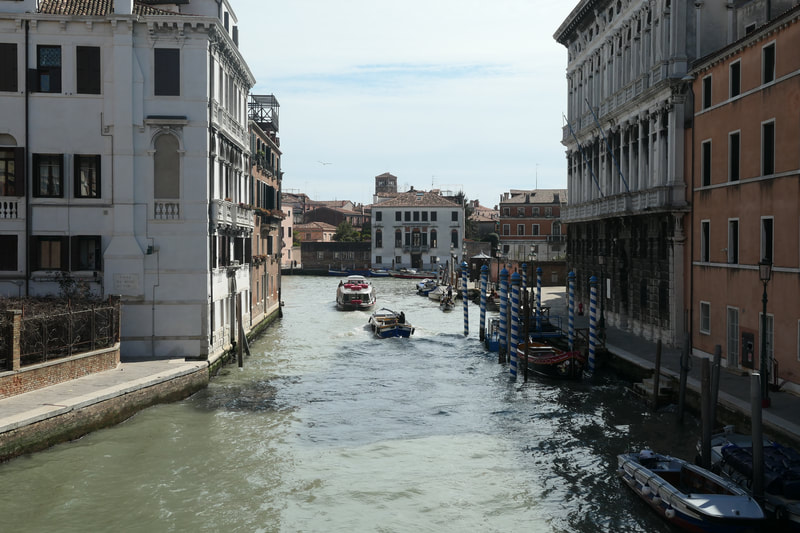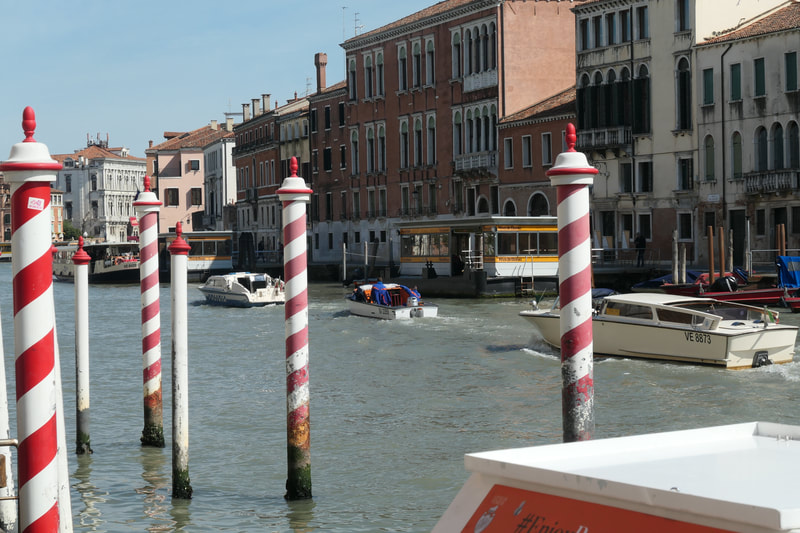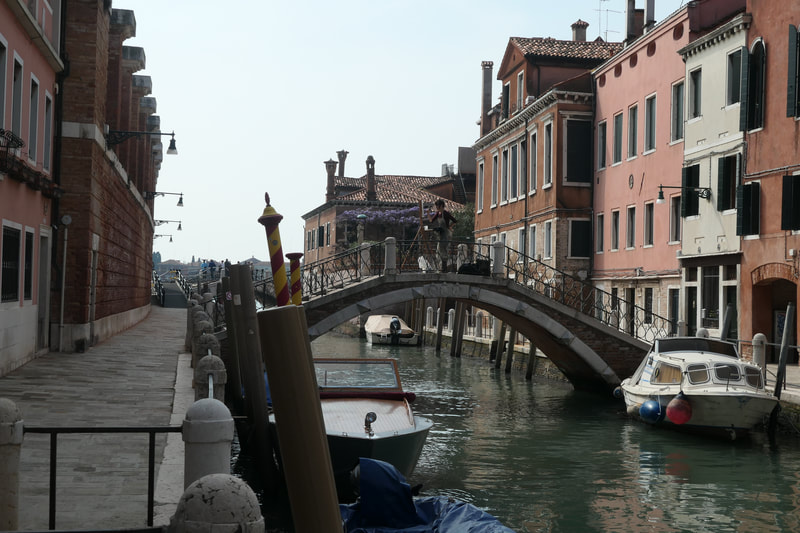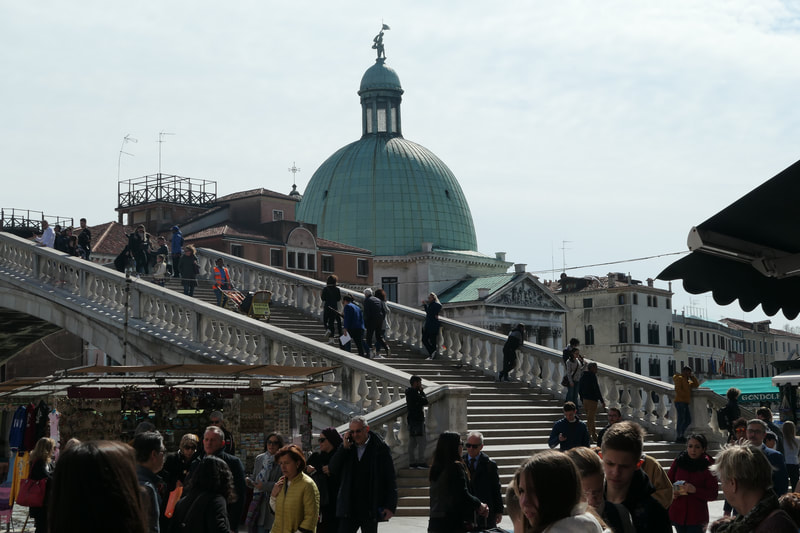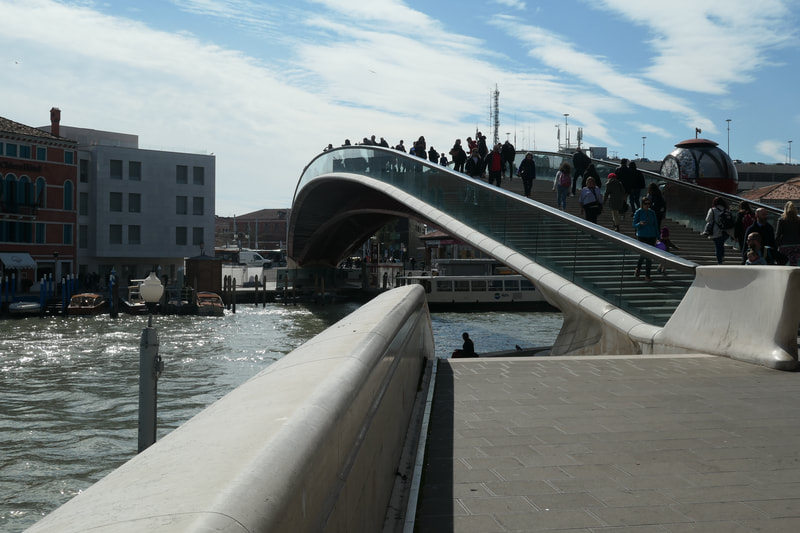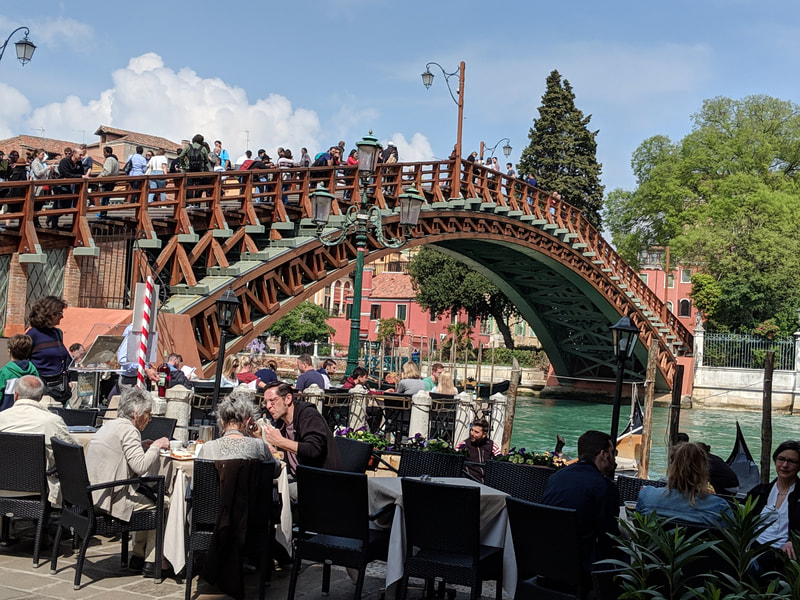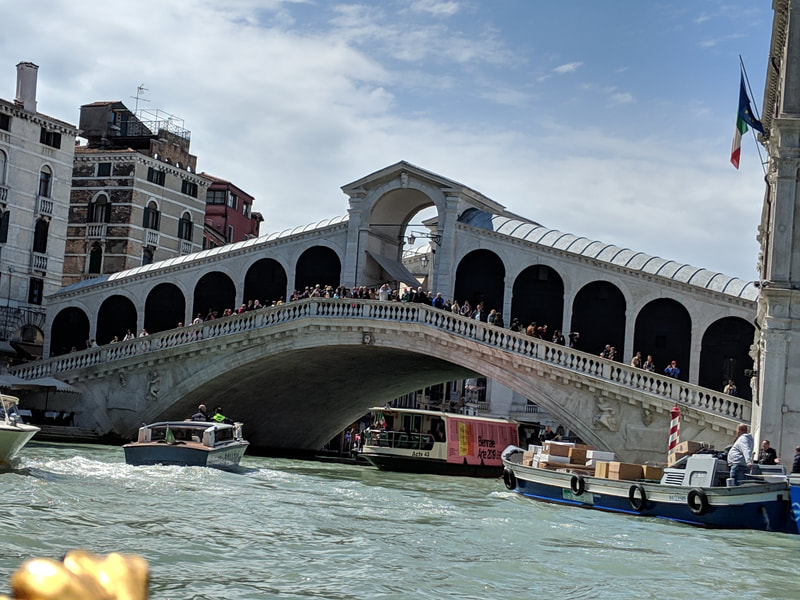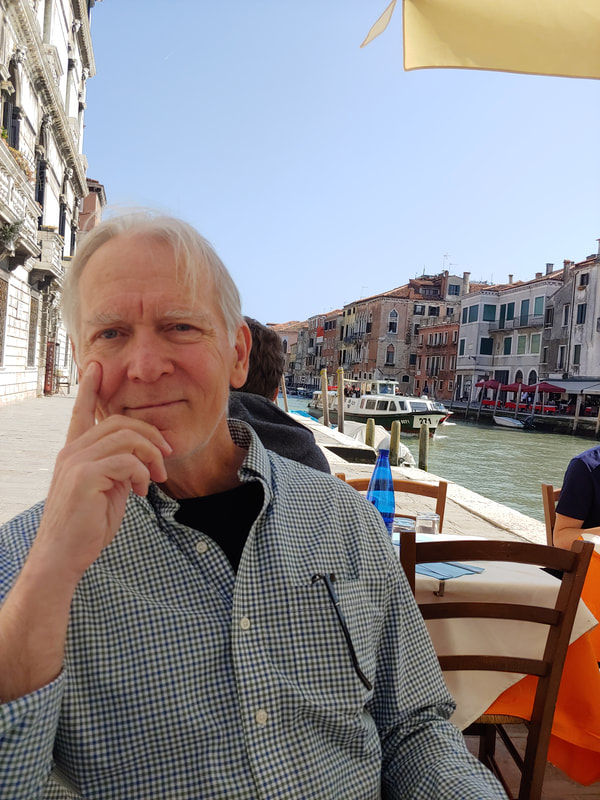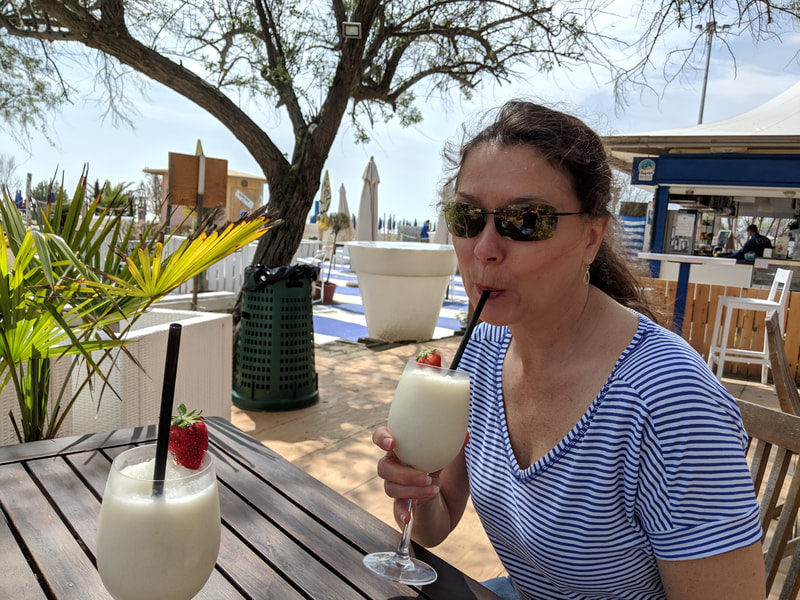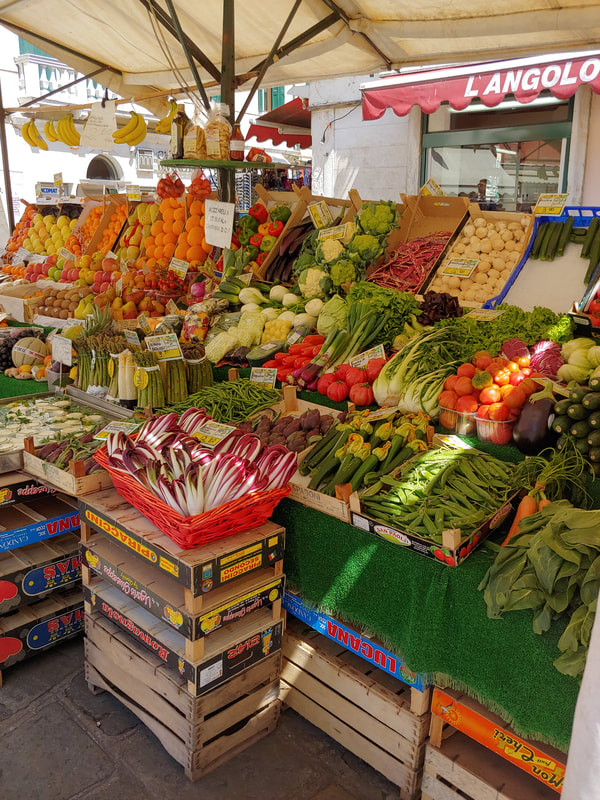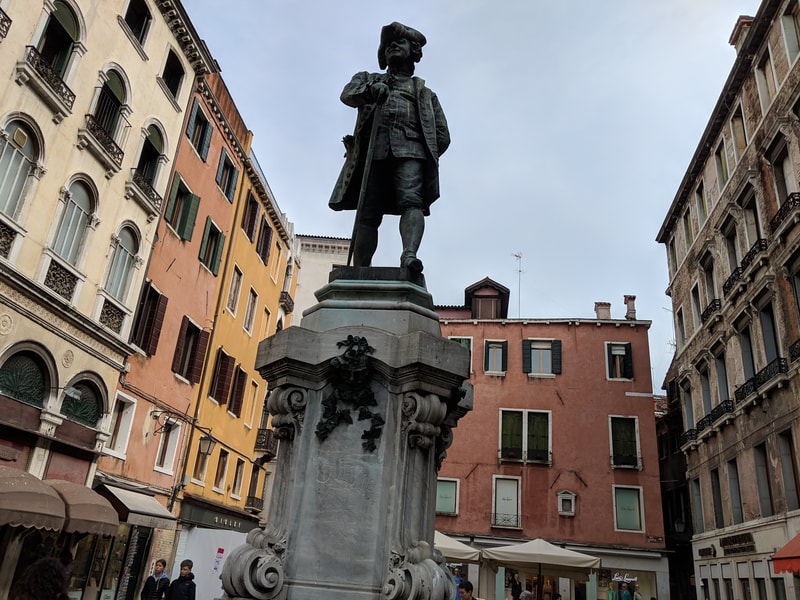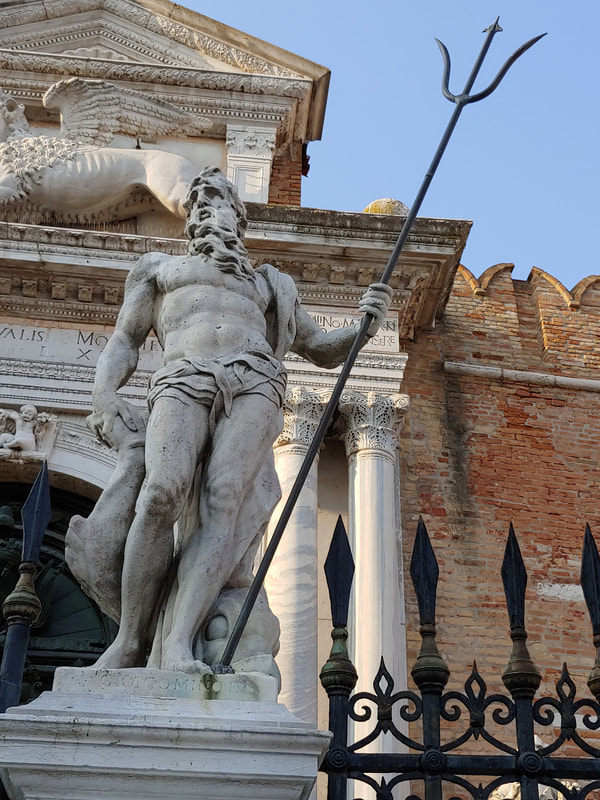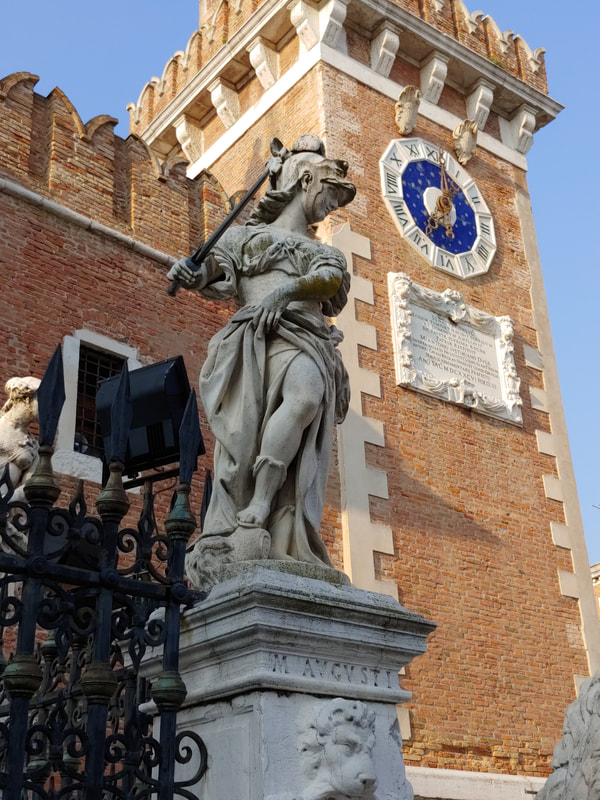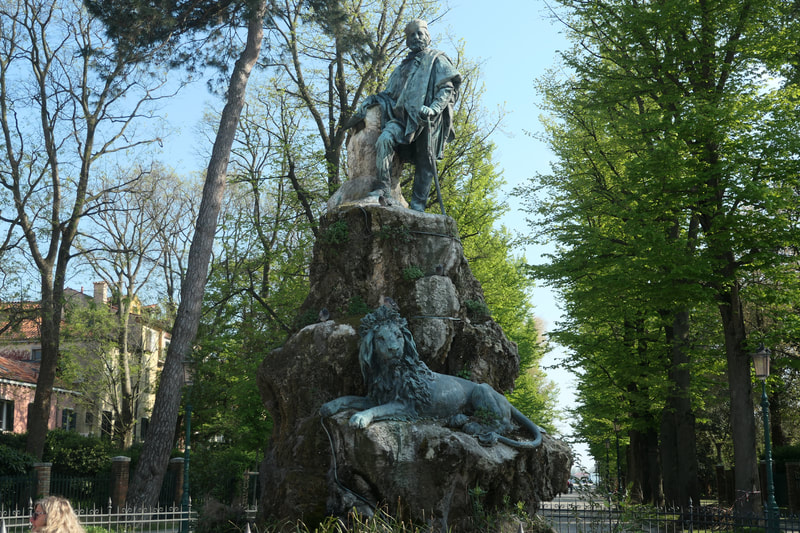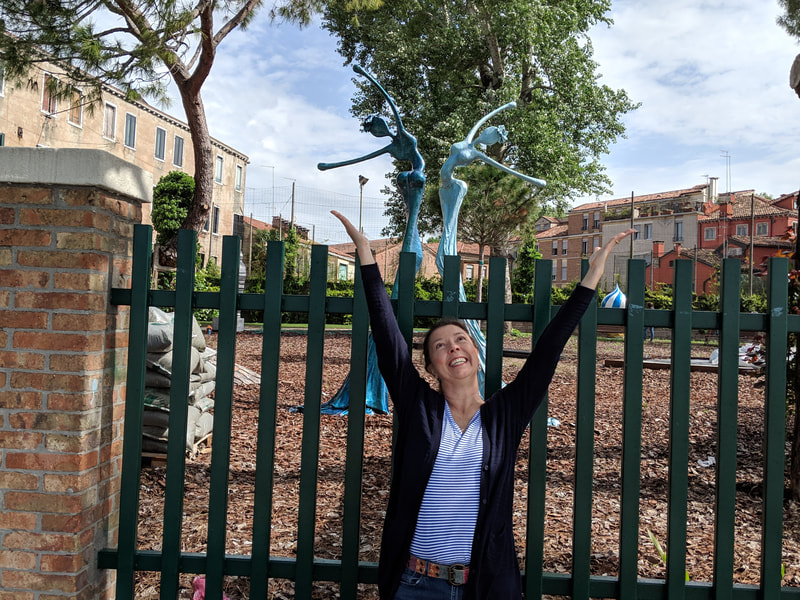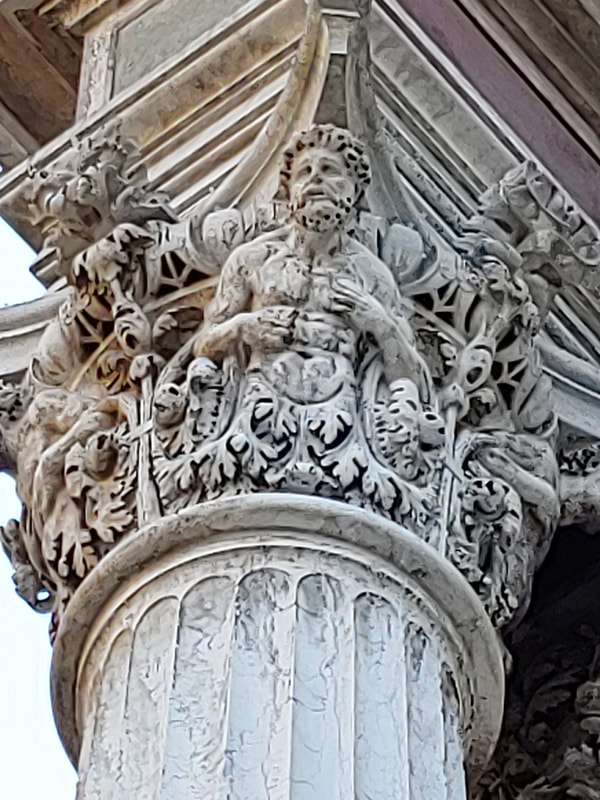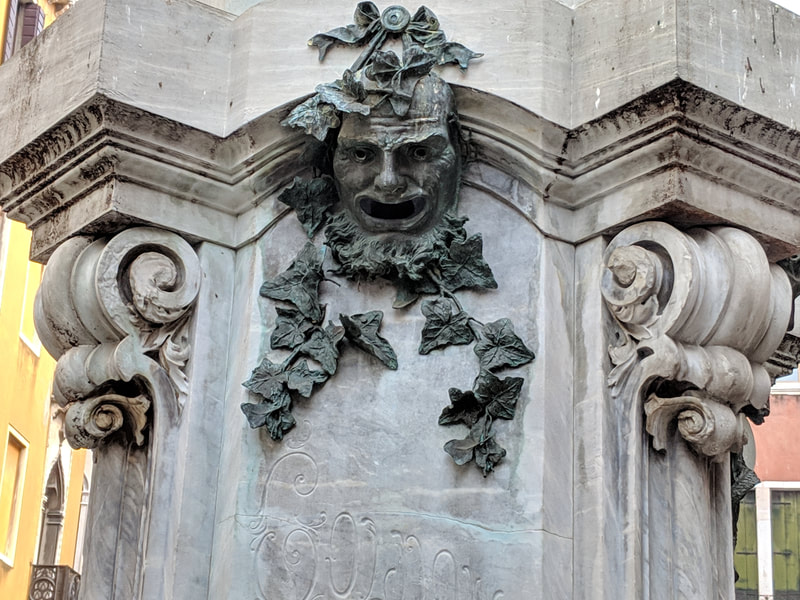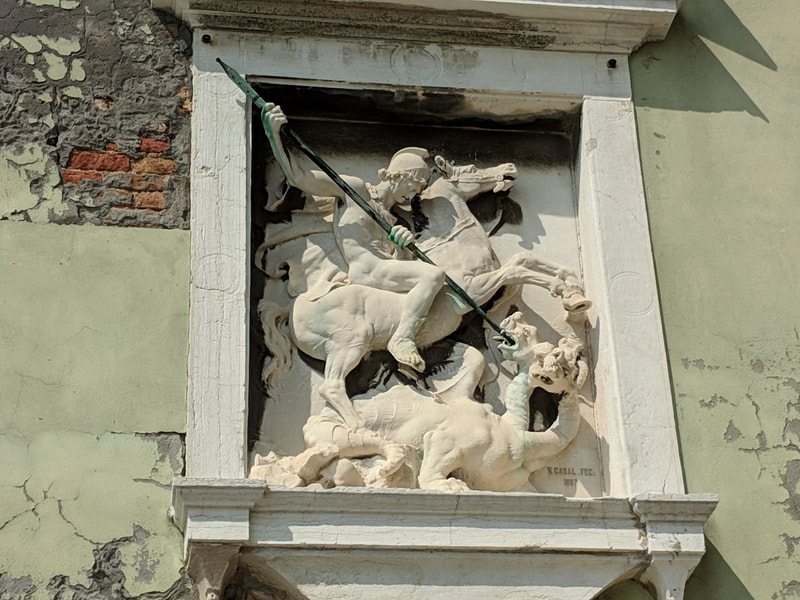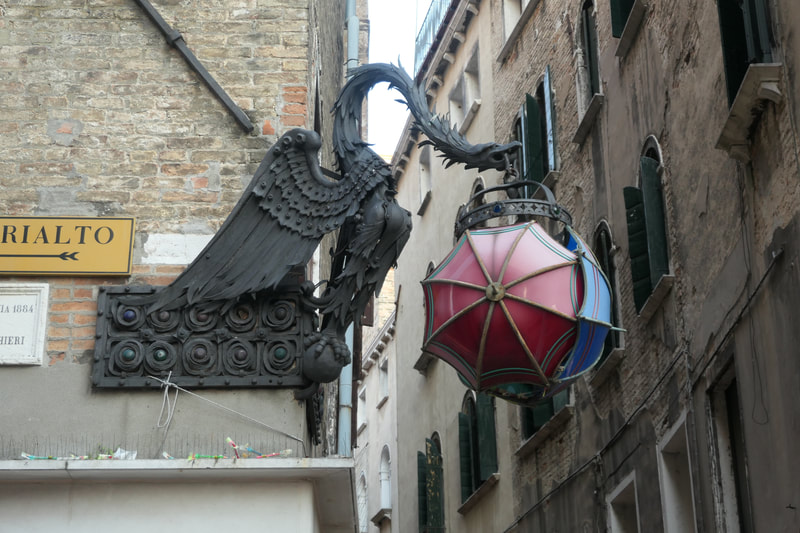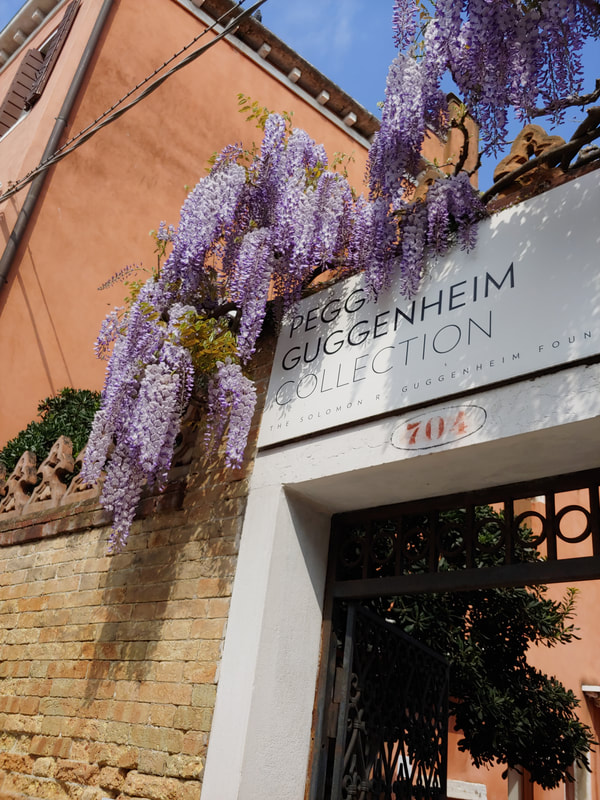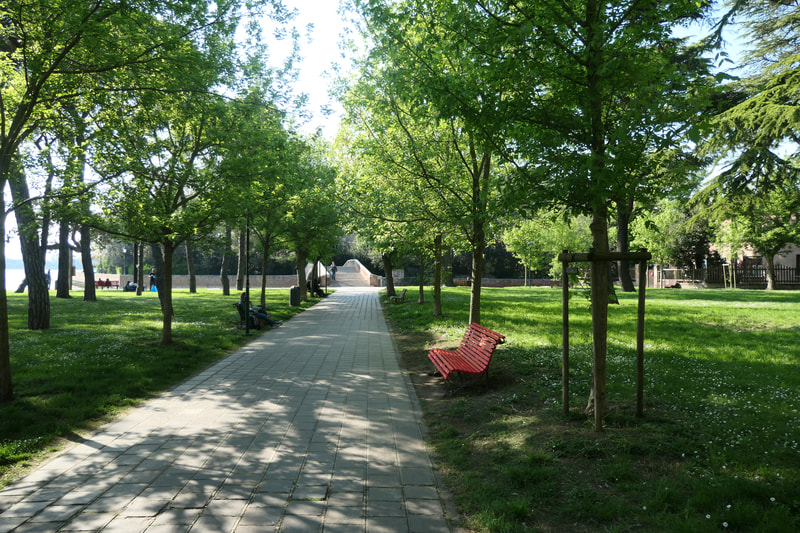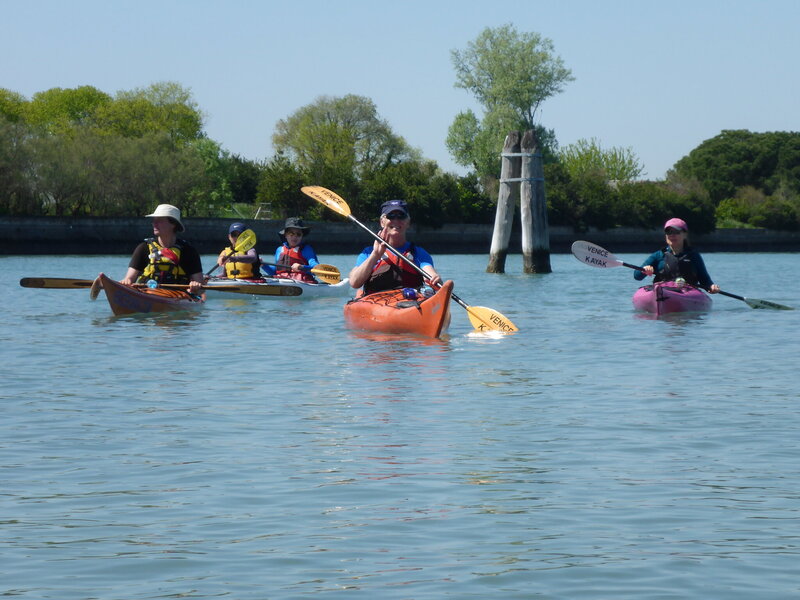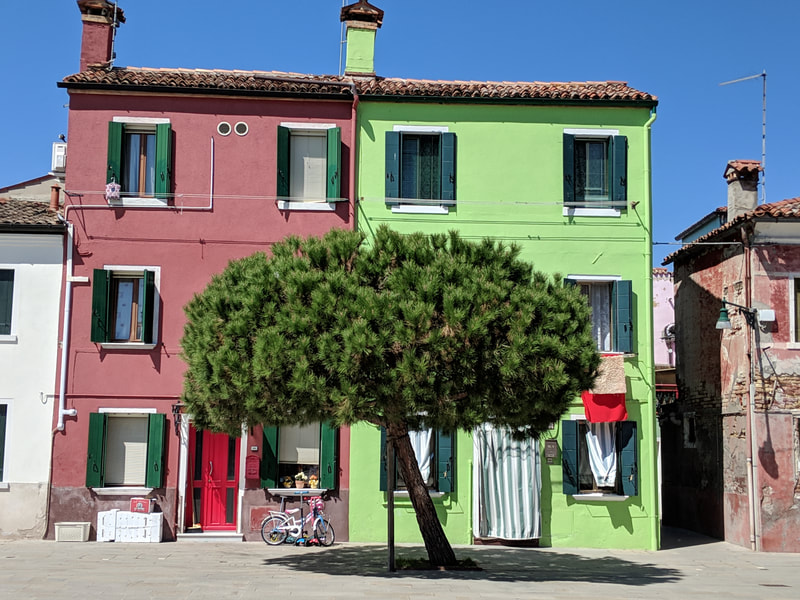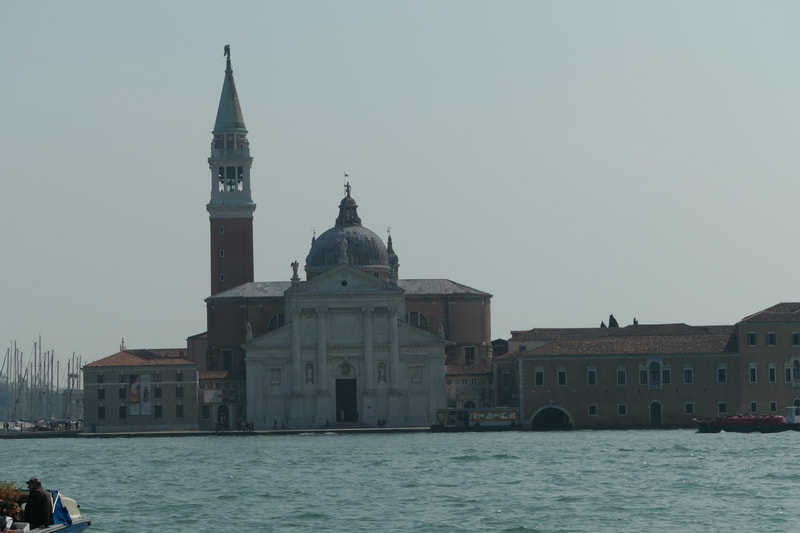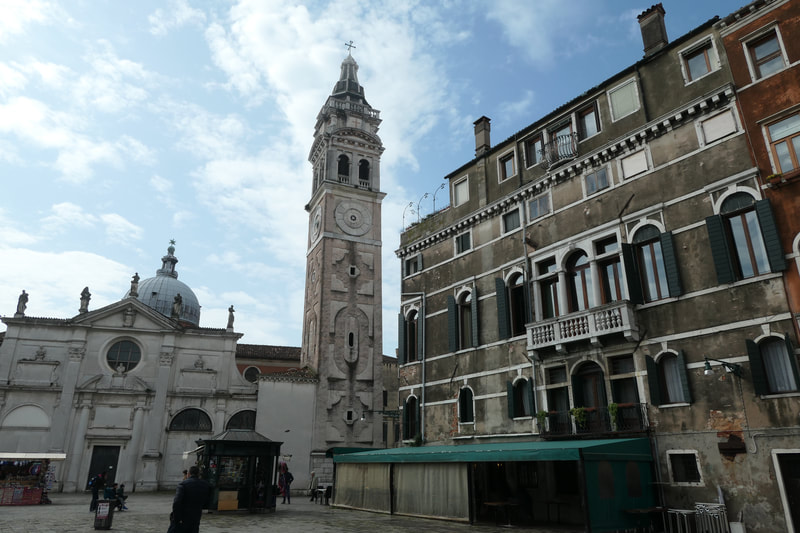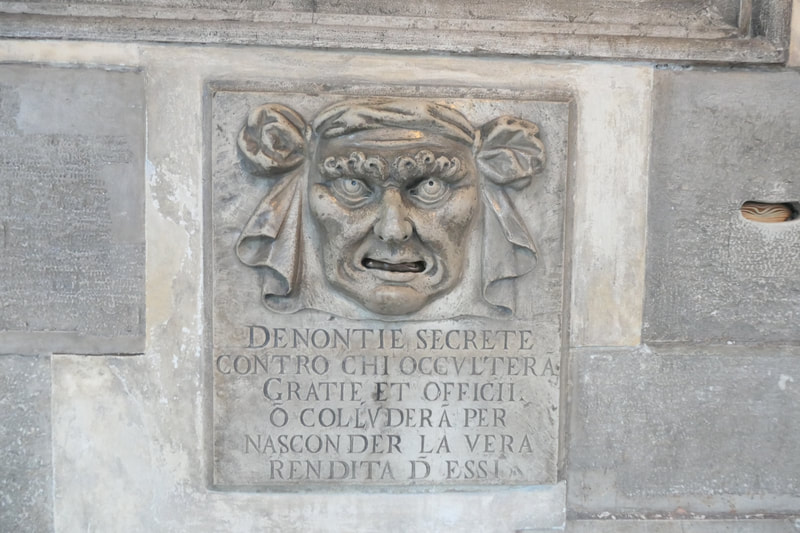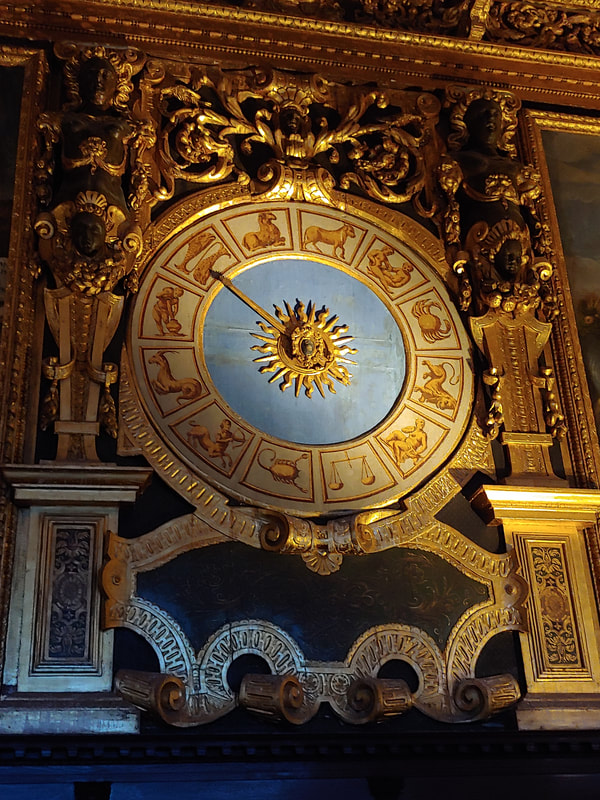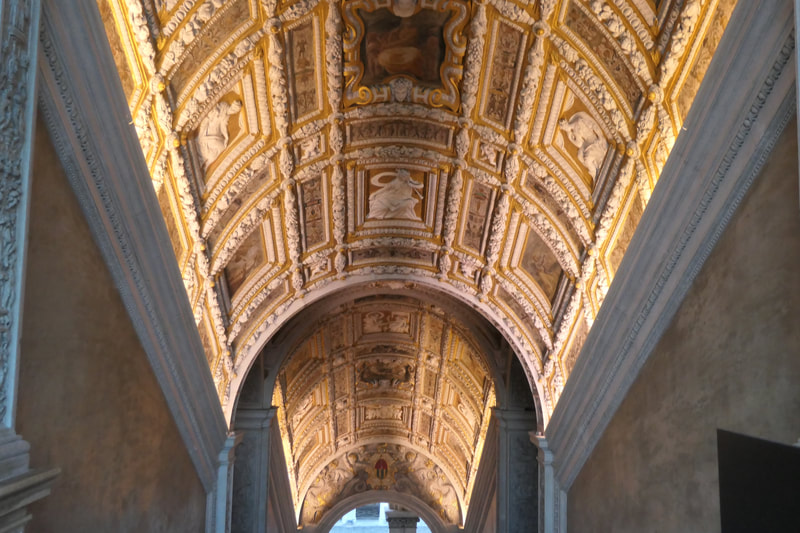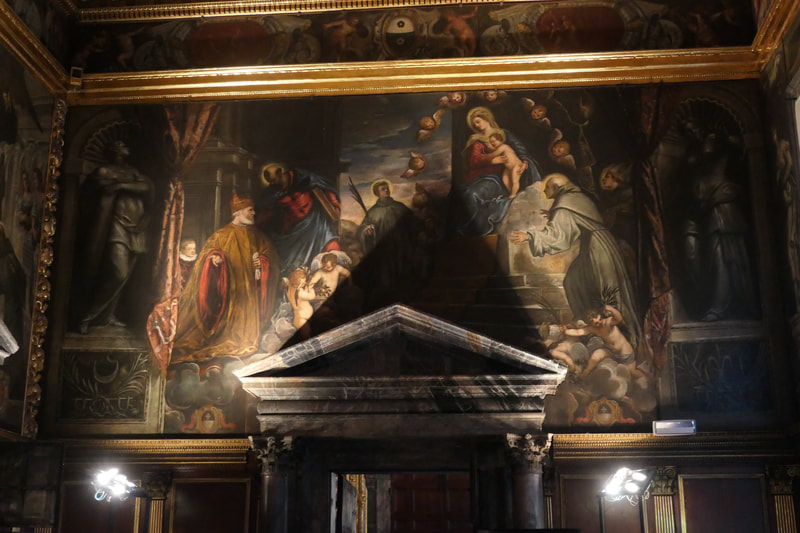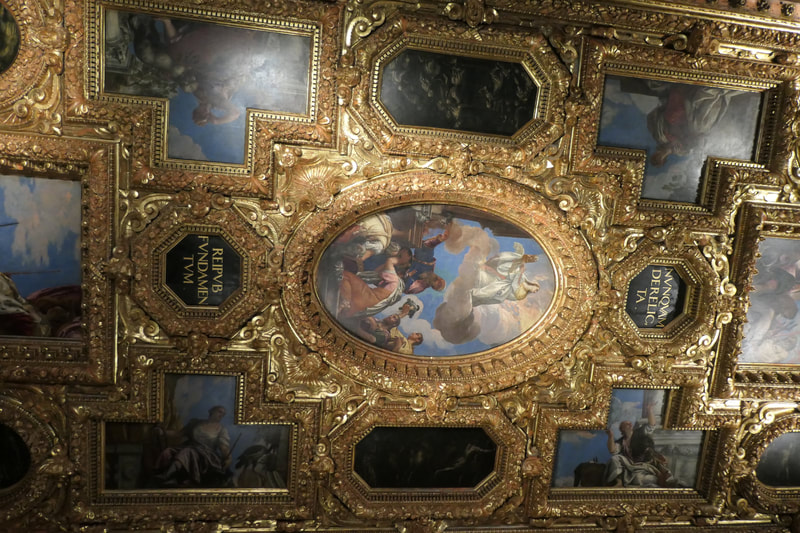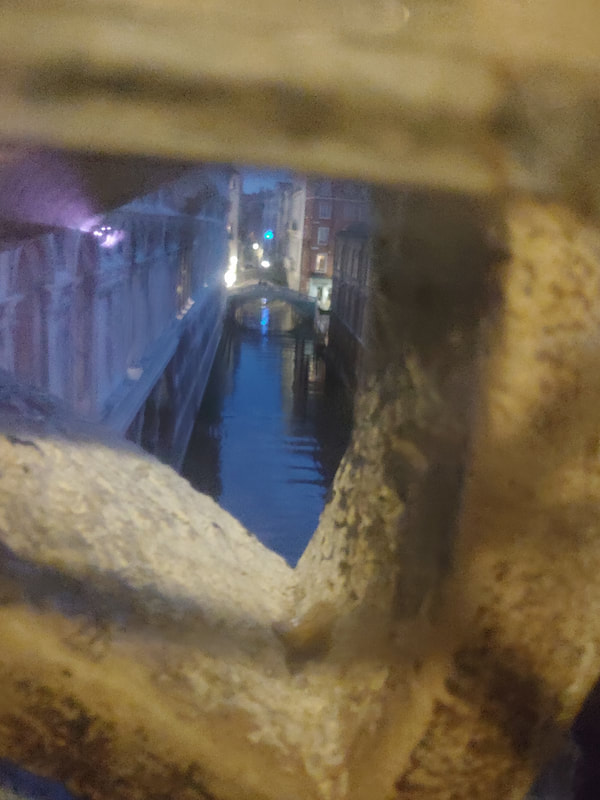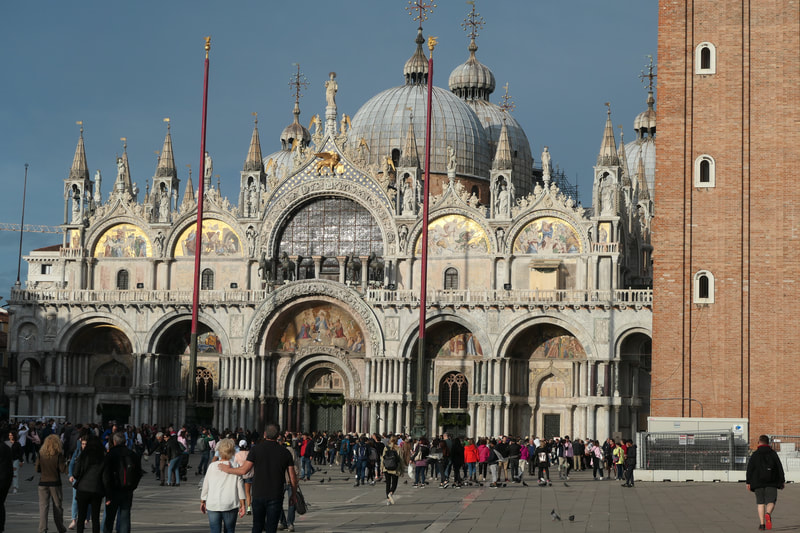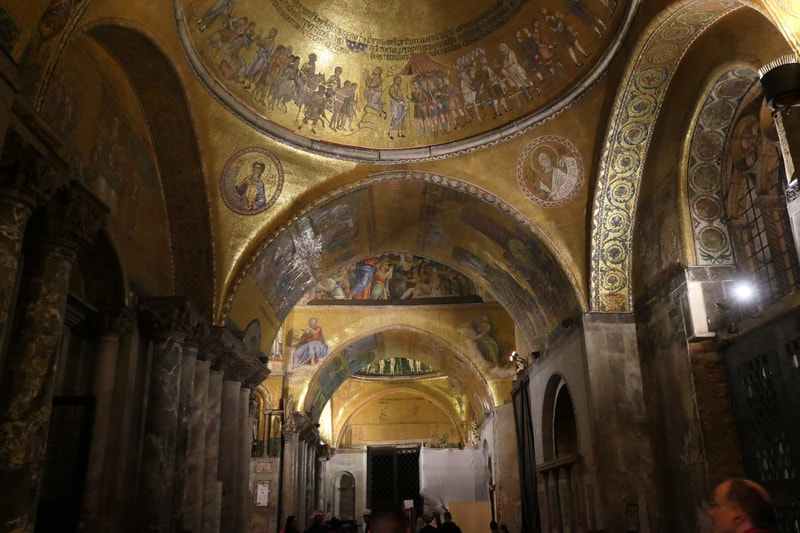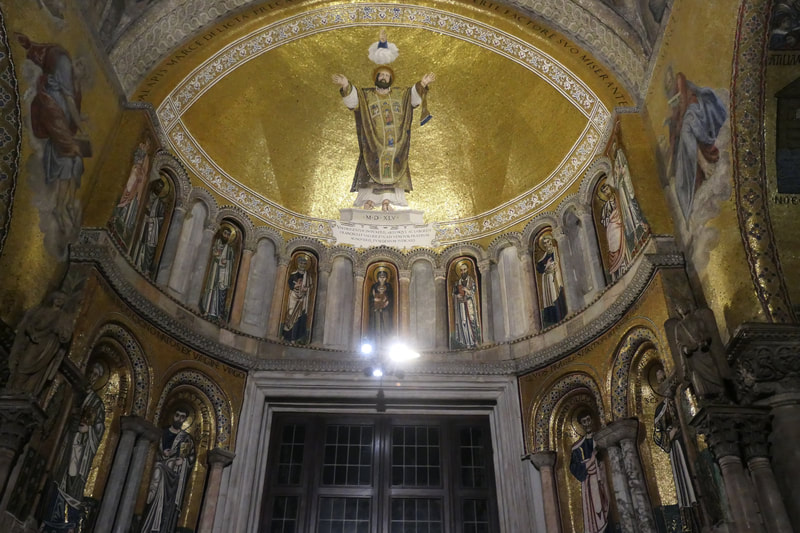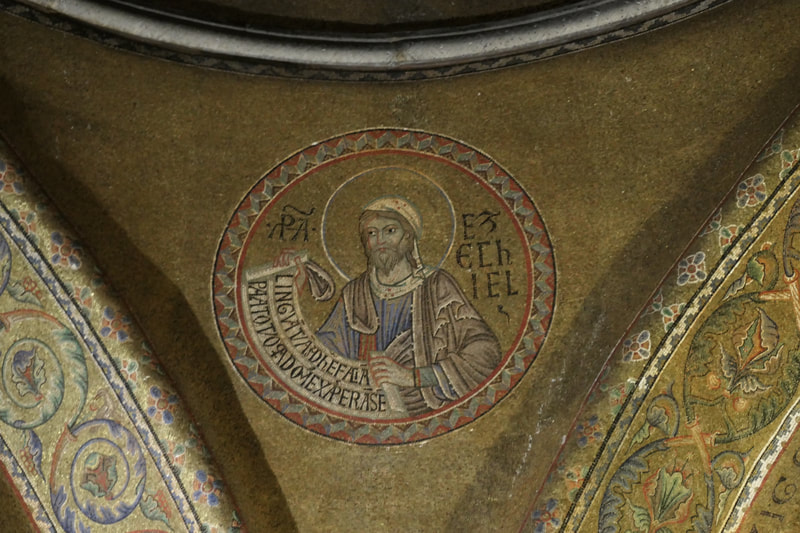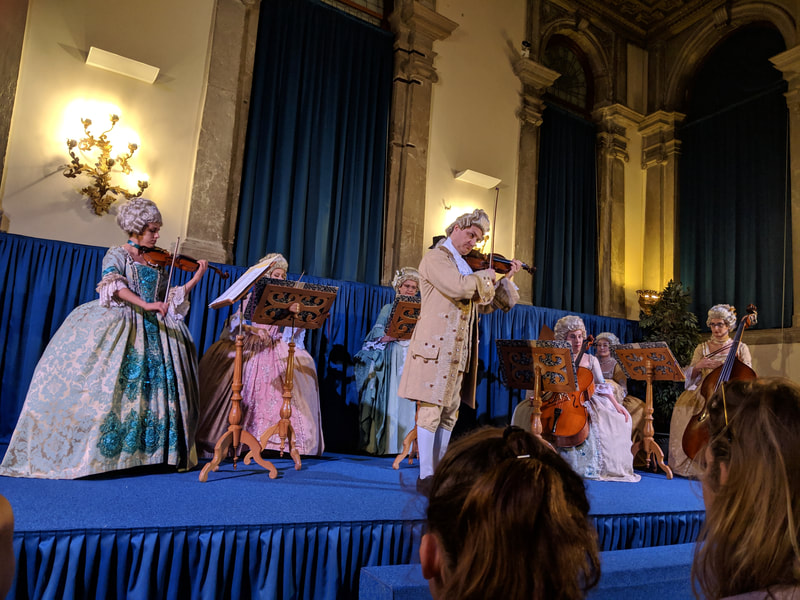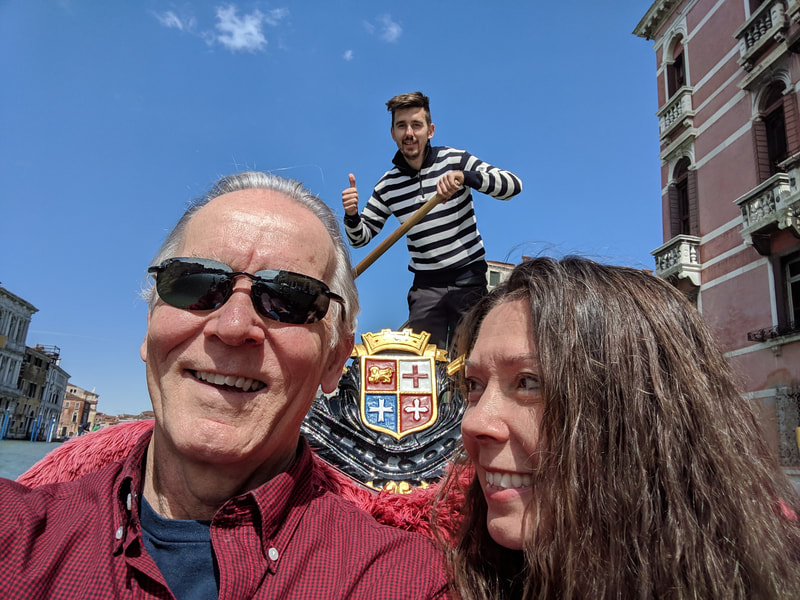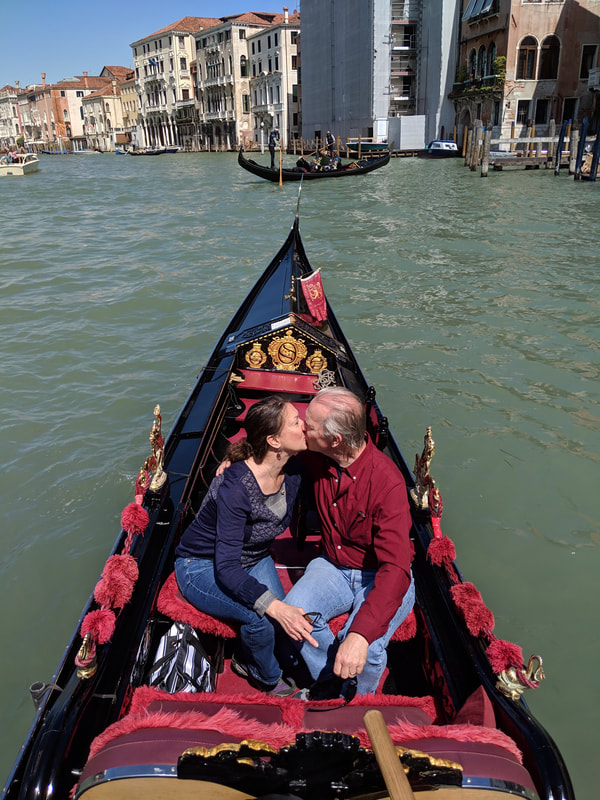Venice, Italy |
I suppose Cindy and I are not alone in having a long-standing desire to visit Venice. It's got to be one of the most intriguing and exotic locales on the planet. Considered one of the most beautiful cities on earth, Venice is amazingly vibrant considering it's a millennium and a half old. A beautiful apartment in the ancient Jewish ghetto district was our home base while we explored the city, and what a delightful neighborhood! Friday nights were especially joyous, when our neighbors would celebrate the Sabbath in the square below our windows.
Venice, we discovered, came into being as a refuge for people fleeing the fall of the Roman Empire and the subsequent influx of barbarian tribes. The area originally was a collection of tiny islands inside a lagoon. Enterprising builders pounded over ten million wooden tree trunks into the waters of the lagoon, as closely spaced as they could, put limestone over the tops, and built their city on that foundation. And the city's lasted for 1600 years! It's a bittersweet experience to visit; on one hand, it is beautiful and vibrant, on the other, the city is slowly dying. The population is dwindling, the lagoon is vanishing through overuse, and the city is very slowly sinking, both because of the foundation and because of climate.
All things considered, though, we had a wonderful adventure in Venice, and we'd consider going back!
Venice, we discovered, came into being as a refuge for people fleeing the fall of the Roman Empire and the subsequent influx of barbarian tribes. The area originally was a collection of tiny islands inside a lagoon. Enterprising builders pounded over ten million wooden tree trunks into the waters of the lagoon, as closely spaced as they could, put limestone over the tops, and built their city on that foundation. And the city's lasted for 1600 years! It's a bittersweet experience to visit; on one hand, it is beautiful and vibrant, on the other, the city is slowly dying. The population is dwindling, the lagoon is vanishing through overuse, and the city is very slowly sinking, both because of the foundation and because of climate.
All things considered, though, we had a wonderful adventure in Venice, and we'd consider going back!
|
Top Photos
Venice -- For a quick overview: |
|
Gallery - For the whole story
Proudly powered by Weebly
